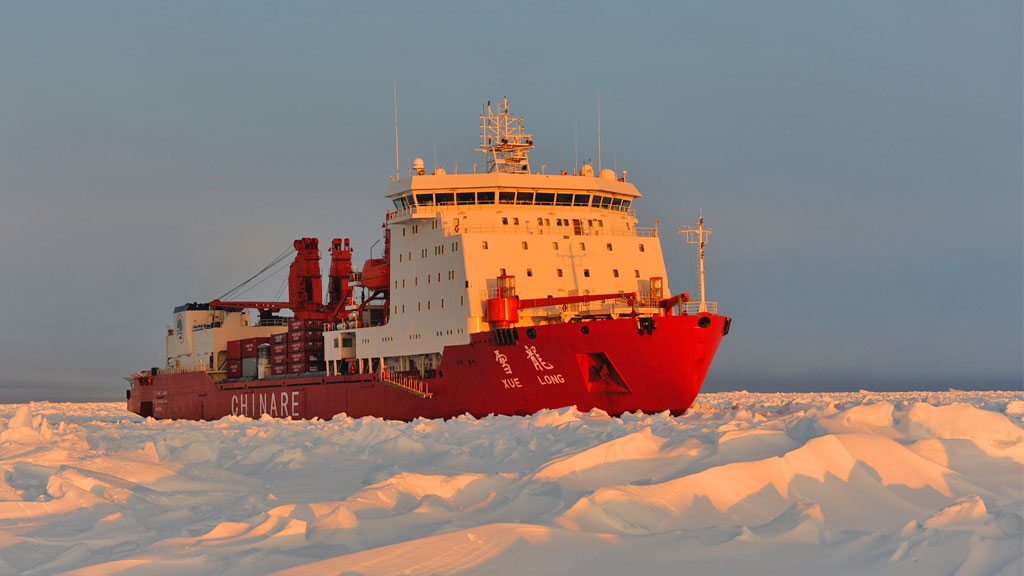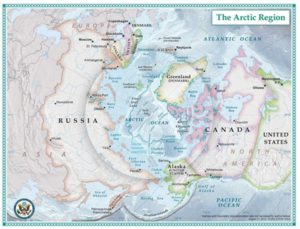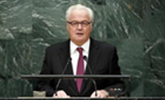China’s New Arctic Strategy Challenges the U.S. in the High North
2018年03月05日 10:21:38
来源:凤凰国际智库
作者: Andrew Holland
On January 26, 2018, the government of China issued its first official White Paper on China’s Arctic Policy, calling for a new strategy on how the country will engage with Arctic nations, promote sustainable development in the region, and exploit the Arctic’s vast resources.
On January 26, 2018, the government of China issued its firstofficial White Paper on China’s Arctic Policy, calling for a new strategy on how the country willengage with Arctic nations, promote sustainable development in the region, andexploit the Arctic’s vast resources. For nearly a decade, China has focusedattention on the Arctic, with several high-profile transits of their icebreakerthe Xue Long (Snow Dragon), an increasingly strong economic and diplomaticpresence, and even military exercises in Arctic waters.

The White Paper is clear about China’s reason for their interestin the Arctic, saying “Global warmingin recent years has accelerated the melting of ice and snow in the Arcticregion.” In the last decade, since a drastic drop-off in seaice in the summer of 2007, the Arctic region has undergone a remarkable changein state, from an Arctic Ocean perpetually enclosed in ice to one open totransit and human exploitation. Ice cover of the Arctic sea has fallen tolevels unseen in human history, while the region warms at twice the rate of therest of the world. Climate change has opened the region, and countries haverushed to fill the gap. China – which calls itself a “near Arctic state” – hasbeen one of the most aggressive nations in exploiting the newly opened region.
In the new White Paper, China links their new Arctic Policy to the Beltand Road Initiative of drawing China together with its trading partners.
As I’ve written before, China’s One Belt- One Road policy isan ambitiousstrategy that directly challenges the U.S. around the world. The Arctic Strategy calls for a “Polar Silk Road”that would link the region together and foster “sustainable economic and socialdevelopment of the Arctic.” First mooted in June, 2017, the Arctic was included in the Belt and RoadInitiative as a third “blue economic passage” (the first two are apassage through the Indian Ocean and Mediterranean to Europe and a passagethrough the Pacific to Oceania and the South Pacific) that is “envisionedleading up to Europe via the Arctic Ocean.” Overall, the Belt and RoadInitiative focuses on Chinese economic assistance that would buildinfrastructure to help connect far-flung countries regions to China viaupgraded infrastructure and economic development. Some have likened it to aChinese version of America’s Marshall Plan. Though unsaid in documents, thisstrategy is clearly a way to build economic, security, and cultural tiesbetween nations in the Eastern Hemisphere, with China at the center.
For that reason, the Belt and Road Initiative is an indirectchallenge to American hegemony along both the Pacific Rim and throughoutEurasia. However, it is not clear that the United States under the TrumpAdministration has made any effort to counter China’s growing influence.Although the Trump Administration is beginning to confront China on what itcalls unfair trade practices, aside from a few fitful remarks by PresidentTrump about an “Indo-Pacific Strategy,” it has not provided an American alternative toChinese influence. With the Trump Administration’s withdrawal from the TransPacific Partnership on the first day of the new Administration, there could notbe a stronger message to potential partners.
This new Arctic strategy has been buttressed by direct, highlevel diplomacy with Arctic nations. In 2017, Chinese President Xi Jinping helddirect meetings with leaders of 7 of the 8 Arctic nations: Russia, Finland, Denmark, Sweden, Norway, Canada and the United States. In the eighth, Iceland, a senior Chinese delegation visited Reykjavik,touting the two country’s increasingly close relationship. Although there is noindication that U.S. President Trump discussed Arctic issues with President Xi,the Chinese leader did stopover in Anchorage, Alaska, where he met with Governor Walker, held a publicbriefing, and toured along the Seward Highway.

In these meetings, and in the new Arctic strategy, China claimsthere are four key areas of focus in the Arctic: shipping routes, oil andmineral resources, fisheries, and tourism. There are long-range reasons forChina to be involved in each of these areas; China wants to streamline new sealanes for exports, China wants to secure access to critical minerals for itseconomic growth (and to preempt competitors from seizing them), China needs tofind alternatives sources of fish to supplement its increasingly empty seas,and Chinese people are demanding tourism to areas of clean air. Howeverjustifiable the reasons for Chinese interest are, they are also clearchallenges to longstanding American interests.
Like other aspects of the Belt and Road Initiative, it is notclear that the Trump Administration has any plan to counter China’s growinginfluence.
In the Arctic, the United States has always been a reluctantpower. Alone among Arctic nations, the United States has invested very littleinto its Arctic resources – with no real ports along Alaska’s Arctic waters,little military presence, and insufficient diplomatic engagement. While thischanged slightly during President Obama’s time, with the first Presidentialtrip to the Arctic in September 2015, it appears that American interest to theArctic has returned to its historic disregard. The State Department has notretained an Arctic Special Envoy, nor even replaced the recently-retired DeputyAssistant Secretary, Bureau of Oceans and Environmental and Scientific Affairswho had been responsible for Arctic relations. While there may be some fundingfor procurement of a new icebreaker in the upcoming 2018 budget, the US CoastGuard still limps along with only a 40 year-old heavy icebreaker and a mediumicebreaker used by the National Science Foundation for scientific research.Though the Department of Defense recently updated their Arctic plan, they havenot invested in the resources needed to meet the challenge.
President Trump’s sole public comments about the Arctic havebeen a garbled message in an interview saying (wrongly) that “The ice caps weregoing to melt, they were going to be gone by now. But now they’re settingrecords. They’re at a record level.” To the contrary, scientists uniformly agree that the volume and coverage of polar ice hasbeen dramatically reduced over the past decade. In Trump’s meeting withNorwegian Prime Minister Erna Solberg, there is no indication that the leadersof two Arctic nations discussed Arctic issues – though she had discussed theissue with Chinese President Xi.
In the past, I’ve written that the threat of conflict in theArctic comes from a misreading of American interest and intentions. Now, withno coherent American message, presence, or messenger, that threat is higherthan ever.
With the Trump Administration’s focus on confronting China, itmay be a surprise that there has been little investment in confronting the Beltand Road Initiative. Seeing the priority that the Chinese government has placedon diplomatic overtures to Arctic states, and their demonstrated interest inresources within the Arctic, perhaps this is an opportunity to direct Americanattention to our forgotten Arctic shores. It is long past time.
Andrew Holland:
AndrewHolland isthe American Security Project’s Director of Studies and Senior Fellow forEnergy and Climate. As an expert on energy, climate change, and infrastructurepolicy, he has worked at the center of debates about how to achieve sustainableenergy security and how to effectively address climate change for the lastdecade.
Heserved as Legislative Assistant on Energy, Environment, and Infrastructure forUnited States Senator Chuck Hagel of Nebraska for three years from 2006 through2008. He worked in the US House of Representatives for the House Ways andMeans Committee and the Office of Congresswoman Roukema.
Heholds a Master’s Degree in International Strategy and Economics from theUniversity of St. Andrews in Scotland and a Bachelor’s Degree in Historyand Economics from Wake Forest University in North Carolina.
Heis originally from New York City, grew up in New Jersey, and currently residesin Alexandria, VA.


[责任编辑:李帅宇 PN162]
责任编辑:李帅宇 PN162
- 好文

- 钦佩

- 喜欢

- 泪奔

- 可爱

- 思考

网罗天下
凤凰国际智库官方微信
视频
-

金正男长子或已乔装成警员完成认尸
播放数:212
-

菲送中国南海大礼?这次日本真急了
播放数:214
-

两岸政策奏效?蔡英文民调离奇回升
播放数:314
-

有阴谋?3月内俄5位外交官接连死亡
播放数:311

























